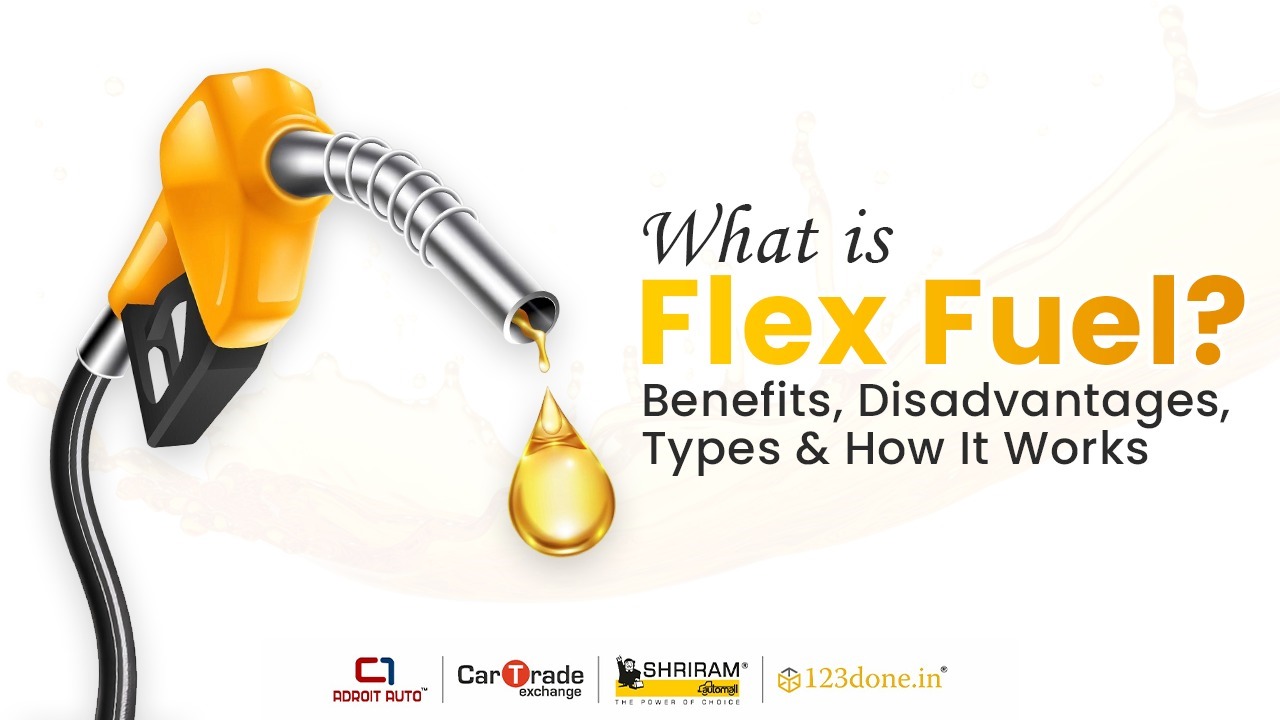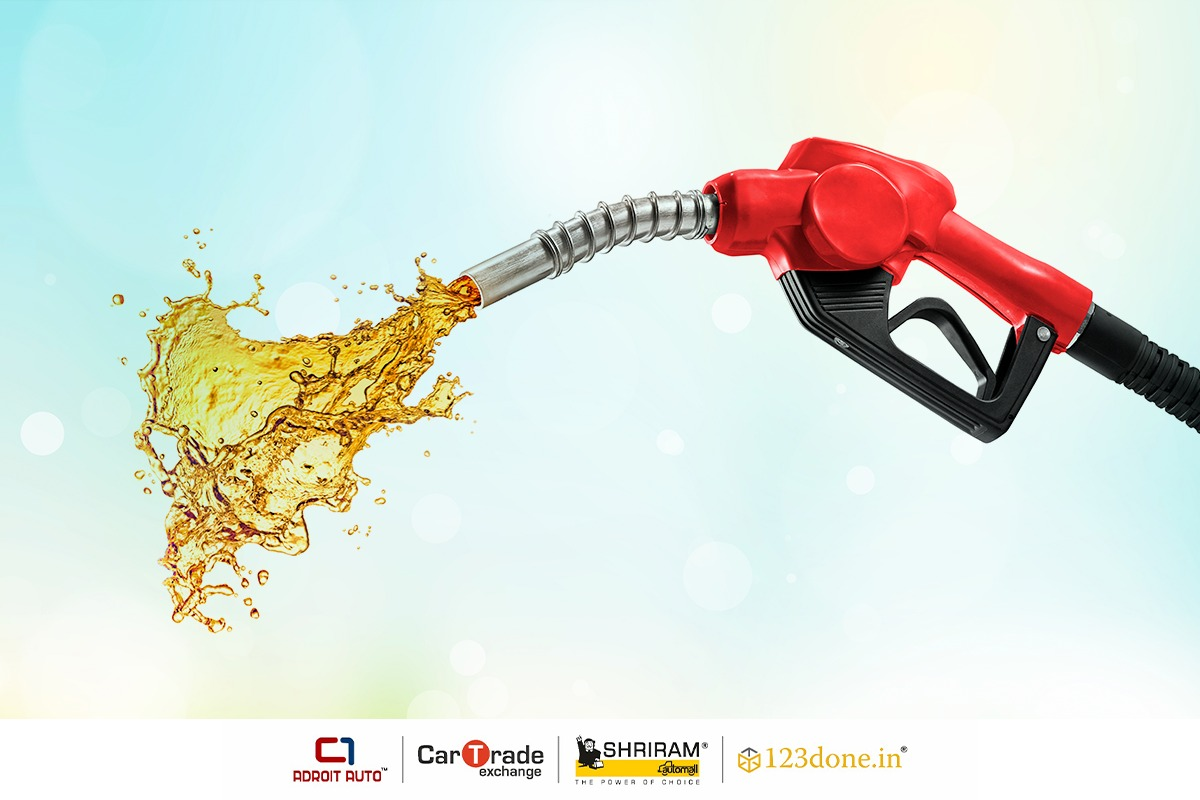What Is Flex Fuel? Benefits, Disadvantages, Types & How It Works

The need and use of alternate fuels are on a rise. One such fuel which is a blend of petrol and ethanol or methanol is known as flex fuel. It offers vehicles the flexibility to run on either on gas, ethanol or both. Although this causes a lower fuel efficiency, flex fuel offers many benefits including reduced reliance on oil imports, lower carbon emissions, and also supports agricultural economy. Flex fuel works on engine sensor technology and based on that, there is one distinct types of technologies, i.e. a flexible fuel vehicle which can run on pure gasoline, pure ethanol (E100), or both combined together.
Unlike petrol or diesel, flex fuel is an environment-friendly fuel which can also combat rising fuel prices. Union Minister Nitin Gadkari has also urged the car manufacturers to develop flex-fuel compliant engines for future models. This guide will help you
What is Flex Fuel
Flexible fuel which goes by flex fuel is an alternative fuel which is made by combing gasoline with ethanol or methanol. These fuels are only compatible with internal combustion engines to be able to work on different kinds of fuels. This fuel can be a mix of 85% ethanol and 15% gasoline (E85), or any combination of these two fuels. The flex-fuel vehicles use advanced sensors and Engine Control Module (ECM) to detect the blend of the fuel and adjusting engine performance.
Benefits of Flex Fuel
Since the idea of alternate fuel is fairly new, let us help you decide whether choosing a flex-fuel vehicle is worth it or not. Here are the benefits of flex fuel:
Environment- friendly
Ethanol is a comparatively cleaner fuel than gasoline as it burns with fewer toxic fumes into the environment. Flex fuel contains fewer greenhouse gases which makes it an eco-friendly option. Amidst Indian pollution rates, going for a cleaner burning fuel is an eco-conscious choice that we must make.
Flexible to Use
The name flex fuel suggests flexibility. The flex-fuel engines are designed in a way that they blend easily with ethanol and petrol. Due to this, there is no restriction of using a single fuel, which means that your options of using alternate fuels open up. You can use petrol when in rural areas or on highways, and can switch to the blend while driving in urban settings. The sensors present it flex-fuel engines are designed to adjust how to use fuel by sensing everything.
Sustainability
Ethanol is sustainably produced from products like sugar cane and corn, which also help reduce the overall cost of the fuel. Because of this manufacturing method, the carbon footprint from processing the fuel is also reduced substantially.
Performance
It is often debated that using an alternate fuel can impact your vehicle’s performance in a negative context. However, it can have the opposite effect, i.e. in a positive context also. There is no loss in the performance if flex-fuel vehicles when using E85 fuel, on the contrary, some vehicles can generate increased horsepower and torque. Now many CNG-fuelled cars have the issue of less power than the petrol ones. This is not true for flex-fuel vehicles, as they provide similar or even better results than the petrol ones.

Disadvantages of Flex Fuel
Every new technology brings with it some sets of disadvantages too. There are some cons of using flex fuel also, let us have a look at them:
Engine Wear
The ethanol in flex fuel cause greater wear and stress on the vehicle engines. Although engines can be designed to adjust to the blend of fuels that are used in making flex fuel, still the maintenance of such engines cost way more. The technology is such with the presence of sensors that improving its life is very expensive.
Lower Mileage
Ethanol does burn cleaner that petrol, but the energy produced as compared to petrol is very less. Due to its cleaner burning, flex fuel cars use more fuel than petrol cars. This can however be balanced by the lower flex fuel prices. Despite a lower mileage, the cost-efficiency of flex fuel makes it a more desirable option for people in India.
Infrastructure Barrier
The most serious concern in the adoption of flex fuel is the infrastructure which requires investment. The current engines are not compatible for the flex fuel which means gas stations need to cater to both kind of fuels adding to the appropriate infrastructure. The rate of adoption of flex fuel cars is slowed due to these restrictions.
Types of Flex Fuel
Flex fuel is made with ethanol or methanol blended with gasoline. Based on the concentration. The fuel can be divided into certain types which are mentioned below:
Gasoline
Where the flex fuel vehicle can run on gasoline alone.
Ethanol-Gasoline
Where the flex fuel vehicle runs on E85, i.e. 85% ethanol and 15% gasoline or E100, i.e. Pure bioethanol. Some other variants also exist such as E25 and E98.
Methanol- Gasoline
Where the flex fuel vehicle runs on M85, i.e. 85% methanol and 15% gasoline.
How Flex Fuel Works
There are is a small processor and sensor present in flex fuel vehicles used to detect the fuel blend in the tank. They help detect the blend and the engine’s computer adjusts ignition timing and air-to-fuel mixture which helps it give the optimal engine performance. Bi-fuel engine has two different tanks for different fuels however flex fuel vehicle stores all kinds of blends in the same tank.

Conclusion
Every new technology comes with pros and cons, so does flex fuel. This guide gives you a clear idea and enough points to consider for making an informed decision which suits your preferences and needs. There is a need to switch to more eco-friendly and cost-effective option as flex fuel but infrastructure and mileage problems are definitely an issue. Although technology keeps on emerging and evolving, so guessing what flex fuel vehicles might bring in the future is quite unpredictable. We hope you make the right choice.
Frequently Asked Questions (FAQs)
1. What is flex fuel in cars?
Flex fuel is an alternative fuel made by blending petrol with ethanol or methanol. Vehicles designed for it are called flexible-fuel vehicles (FFVs) which can run on petrol, ethanol, or a mix of both, offering more fuel choices and helping reduce emissions.
2. What are the main benefits of flex fuel?
Flex fuel helps cut carbon emissions, supports farmers by using crops like sugarcane and corn for ethanol, and gives drivers the flexibility to use petrol or biofuel blends. Some flex-fuel vehicles can even deliver better power than regular petrol cars.
3. Does flex fuel affect mileage or engine life?
Yes, flex fuel can lower fuel economy because ethanol produces less energy than petrol. It may also cause extra engine wear if the vehicle isn’t properly maintained. But modern FFVs are designed to handle these blends safely.
4. Is flex fuel available in India and worth buying?
Flex-fuel cars are slowly entering the Indian market, and the government is encouraging manufacturers to make them. While availability of fuel pumps is still growing, flex fuel can be a good choice if you want cleaner, cost-effective driving in the long run.

 Download Our App
Download Our App



